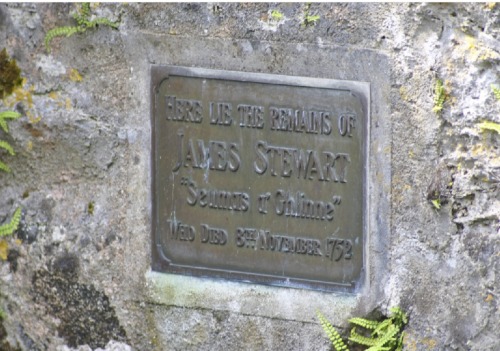On May 14th 1752 Colin Campbell, the Red Fox, was killed in the “Appin Murder” at Ballac
On May 14th 1752 Colin Campbell, the Red Fox, was killed in the “Appin Murder” at Ballachulish One of the most explored murders in our history, it is a tale of power, politics, deceit and injustice. Many say The Appin Murder is one of the biggest if not the biggest miscarriage of justice in the history of Scotland. The law made James of the Glen a murderer, legend has made him the victim. The Campbells were Hanoverians and in the process of clearing as many Stewarts off their lands as possible. James of the Glen and Colin Campbell, a land agent they called “The red Fox”, had had a fight over the evictions in an Alehouse that had been witnessed by a number of people. Campbell carried eviction orders when he was shot on his way to Duror on this day 1752, a few days after the alehouse scuffle. A man holding a musket had been seen disappearing into the woods. But who was that man? Alan Breck, foster-son of the 50-year-old James Stewart, also known as Seaumas a’ Ghlinne, was the main suspect and his foster father was accused of having taken part in the killing. Breck fled to France so James of the Glen was taken prisoner and was not allowed any legal support until 36 hours before his trial. The judge was the duke of Argyll, chief of the clan Campbell, 11 of the 15 jurors were Campbells as well - Stewart. known as James of the Glen stood no chance. He never really defended himself either, but probably not because he was guilty but because he did not want to involve any of his kinsmen. He was hanged for murder. A murder he very probably did not commit, it’s a term I have used a number of times in my posts, the execution of James Stewart on November 8th 1752 was a judicial murder.By all accounts James of the Glen was a quiet and well liked man, he was educated, could read and write in both Scots and Gaelic, he was married to Margaret and had at least 3 children with her. The family lived on a farm in Glen Duror, a few miles South of Ballachulish, where he met his untimely end. He had fought on Culloden field, survived the uprising, only to be hung six years later. They hanged him, put iron chains around his body and kept it hanging on the gibbet for three years. His bones were collected as they fell down and together with his wife Margaret laid to rest on Keil churchyard, the church already a ruin by that time. For a wee bit more about the murder and investigations since, check out the link below.https://www.historyscotland.com/history/the-appin-murder-of-1752-was-the-wrong-man-executed/ -- source link
#scotland#scottish#ballachulish#scottish highlands#murderer#judicial murder#execution#history





